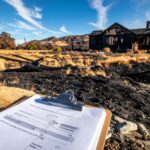RMS announced the release of its North Atlantic hurricane model suite, version 13.0, today, noting that the release delivers the ability to fully quantify the risk from catastrophic hurricane-driven storm surge, and includes new insights into future hurricane activity levels.
“Hurricane Sandy revealed just how real storm surge risk is,” Dr. Claire Souch, vice president, model solutions at RMS, ” said in a statement about the release, adding that the model shows there is a 20 percent chance that storm surge loss will be greater than wind loss for any U.S hurricane that makes landfall. The percentage jumps to nearly 40 percent along the northeast coast of the United States.
“This is a risk the market can no longer afford to ignore,” Souch said.
Building on storm surge methodology, which was initially launched in 2011, RMS said it is the first model to simulate the interaction between wind and surge throughout the entire lifecycle of each hurricane using a state-of-the-art hydrodynamic model.
RMS said Version 13 also includes new data that enables insurers to distinguish between the potential losses from residential and commercial lines of business, adding that commercial and industrial lines typically drive the bulk of the total insurance loss from storm surge.
“Most insurance policies for commercial and industrial lines provide some level of coverage for flood loss,” Souch explained. On the homeowners and small business owners, the potential for insured loss is lower although some market risk does exist from excess- National Flood Insurance Program flood insurance policies.
“Since the 2004-2005 hurricane seasons, insurers’ claims handling processes have strengthened, policy language is clearer, and more U.S. homeowners have purchased flood insurance through the federal government, all of which mitigates the potential for so called coverage leakage of surge loss into residential wind-only policies,” Souch said.
With respect to hurricane activity levels, RMS has also issued a new medium-term rates forecast, which incorporates new scientific findings into the impact that sea surface temperatures have on U.S. landfall. Specifically, research conducted by RMS scientists shows that increased hurricane activity in the Atlantic Basin is not always converting to a proportional increase in hurricanes making U.S. landfall.
The new findings are currently under peer review.
Atlantic hurricanes “are not translating directly to the number of hurricanes that make landfall,” Souch told Carrier Management in an interview last month. “The last several years, in fact, have been very quiet from the U.S.-landfalling perspective,” she said. (See related article, “RMS Hurricane Model Update Coming; Lower Risk Indications Expected.”)
In today’s media statement, Souch said: “Our medium-term rates forecast provides a five-year probabilistic forecast that is unique both within the insurance industry and the academic community.”
“Our forecast gives insurance companies an additional view of the risk that may be more appropriate to future climate conditions, as opposed to using averages of historical activity,” said Souch.
During the Carrier Management interview, Souch said that, considering all the changes—and putting individual portfolio specifics aside—overall, RMS is expecting “a decrease in risk results as a broad generalization,”
“It will be very variable according to geography and line of business,” she added.
Version 13.0 also incorporates the most current data from the Federal Emergency Management Agency’s (FEMA) 2012 flood insurance rating maps, as well as updated information on in-force NFIP policies. Accurate building elevations data is a key determinant to the accuracy of storm surge loss estimates.
The North Atlantic hurricane model suite is being released in RMS’ RiskLink® 13.0 and RiskBrowser® 13.0 risk modeling platforms, and will also be available on RMS(one) at launch in 2014.




















 U.S. E&S Outlook No Longer Positive: AM Best
U.S. E&S Outlook No Longer Positive: AM Best  What to Expect in 2026: U.S. P/C Results More Like 2024
What to Expect in 2026: U.S. P/C Results More Like 2024  Bankers Readying U.S. IPOs at ‘Overwhelming’ Pace Ahead of 2026
Bankers Readying U.S. IPOs at ‘Overwhelming’ Pace Ahead of 2026  Unpacking a Consumer Intervenor’s Novel Idea
Unpacking a Consumer Intervenor’s Novel Idea 




